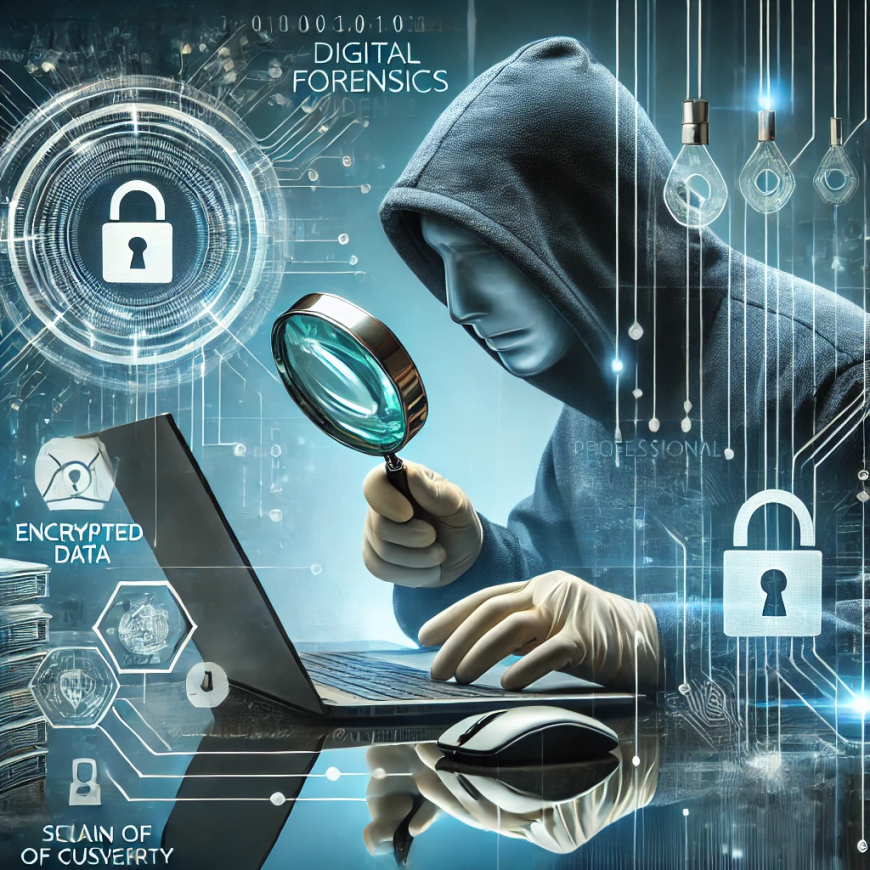Understanding the Role of Evidence in Digital Forensics
In the ever-evolving world of cybercrime, digital forensics plays a critical role in solving complex cases. Whether investigating data breaches, cyberattacks, or fraud, the evidence gathered during an investigation can make or break the case. Preserving evidence correctly ensures that it is intact, reliable, and admissible in court.
Digital evidence, which can include anything from computer hard drives and smartphones to cloud storage and network logs, must be carefully handled from the moment it is discovered. In the absence of proper preservation, the integrity of the investigation may be compromised, and key evidence may be deemed inadmissible in a legal context.
Why Preserving Evidence Is Vital in Digital Forensics
-
Maintaining Integrity of the Evidence
Preserving evidence ensures that it remains unchanged throughout the investigation process. Any alteration, whether intentional or accidental, can render the evidence unreliable or unusable in court.
-
Legally Admissible Evidence
For digital evidence to be used in court, it must be handled according to strict procedures. Improper preservation could lead to evidence being dismissed or not accepted as legitimate in legal proceedings.
-
Reconstruction of Events
Digital forensics often relies on piecing together fragmented or partial data. Preserving evidence ensures that investigators can analyze it thoroughly to reconstruct events, understand attack methods, and pinpoint the responsible parties.
-
Preventing Tampering or Destruction
Cybercriminals often attempt to destroy or tamper with evidence to cover their tracks. Preserving evidence ensures that these attempts are thwarted, and the necessary data can be recovered and analyzed.
Key Steps in Preserving Digital Evidence
-
Secure the Scene
The first step in preserving digital evidence is securing the scene of the incident. This involves preventing anyone from accessing the devices or data until it can be properly documented and collected.
-
Create Forensic Images
Instead of working directly on the original data, forensic experts create exact copies, known as forensic images, to analyze. These images allow investigators to preserve the original data and analyze it without risking alteration.
-
Chain of Custody
Maintaining a proper chain of custody is vital for ensuring the integrity of digital evidence. This involves documenting everyone who handles the evidence, when it was collected, and where it has been stored. Any gaps in the chain of custody can lead to questions about the authenticity of the evidence.
-
Use of Write-Protected Devices
During the investigation, forensic experts use write-protected devices to ensure that no new data is written to the digital evidence. This helps prevent accidental modification or corruption of the evidence.
-
Encryption and Secure Storage
Preserving digital evidence often requires encrypting sensitive data and storing it in secure locations to prevent unauthorized access. This ensures that the evidence is protected until it is needed for analysis.
The Legal Importance of Evidence Preservation
In many cases, the evidence gathered through digital forensics is used to support criminal investigations or legal actions. Courts require evidence to meet specific legal standards for it to be admissible. Preserving evidence correctly ensures that it can stand up to scrutiny in court. Any break in the preservation process, such as failure to maintain the chain of custody or improper handling of data, can result in the evidence being thrown out, potentially derailing an entire case.
Risks of Improper Evidence Preservation
-
Loss of Critical Data
Improper handling or storage of digital evidence can result in data corruption, loss, or alteration, making it impossible to investigate effectively.
-
Inadmissibility in Court
Without proper preservation, evidence may be ruled inadmissible in court, reducing the chances of a successful prosecution or legal outcome.
-
Damage to Credibility
If evidence handling procedures are questioned, it can damage the credibility of the investigation and cast doubt on the findings, making it harder to prove the case.
Best Practices for Evidence Preservation in Digital Forensics
-
Follow Industry Standards
Adhering to industry best practices and guidelines ensures that the evidence is preserved according to recognized protocols, minimizing the risks of mishandling.
-
Involve Digital Forensics Experts
Digital forensics experts are trained to follow the correct procedures for collecting, preserving, and analyzing evidence. Their expertise ensures the integrity of the evidence and the investigation.
-
Implement Comprehensive Security Measures
Implementing robust security protocols, such as encryption and secure storage, ensures that digital evidence remains protected throughout the preservation process.
For more information or to inquire about our services, visit our website or reach out to us directly. Protect your digital assets and ensure the integrity of your investigations with expert digital forensics!







































